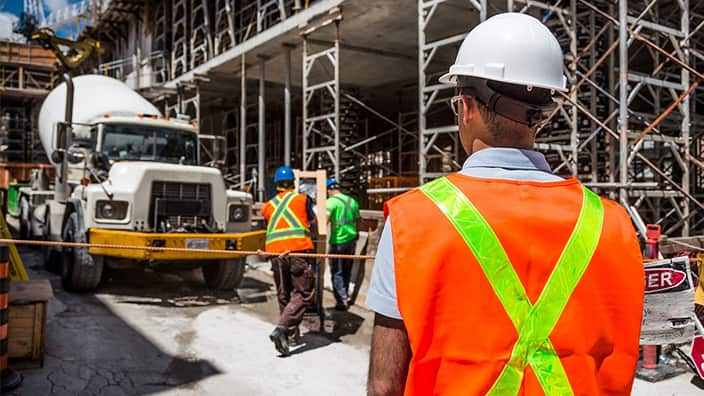Australians have landed almost 1 million new jobs in the last five years.
In a , Treasurer Scott Morrison said that "2017 was a year of extraordinary jobs growth in Australia, over 400,000 jobs created in the year".
"That was the strongest calendar growth in jobs we have seen on record," he said. Now the most in-demand jobs have been revealed by a government report which also projects which industries and occupations will be in most demand over the next five years.
Now the most in-demand jobs have been revealed by a government report which also projects which industries and occupations will be in most demand over the next five years.

Source: SBS
The report published by the Department of Jobs and Small Business projects job growth will be the strongest in the Health Care and Social Assistance with this industry projected to add up to 250,500 jobs in coming five years.
Large contributions to employment growth are also projected for Professional, Scientific and Technical Services (126,400 jobs), Construction (120,700 jobs), Education and Training (116,200 jobs) and Accommodation and Food Services (97,600 jobs).
There are around 12.4 million people employed in Australia out of which around half of the total are employed by Australia’s five largest employing industries each providing more than 1 million jobs.
The five largest employing industries are
- Health Care and Social Assistance (1,663,900)
- Retail Trade (1,286,900)
- Construction (1,167,200)
- Professional, Scientific and Technical Services (1,033,000)
- Education and Training (1,024,300)
Health Care and Social Assistance is Australia’s largest and fastest growing industry and is projected to have the strongest employment growth of any industry over the five years to May 2022, supported by the implementation of the National Disability Insurance Scheme and Australia’s ageing population.
The top five occupations in this industry are registered nurses, aged and disabled carers, child carers, nursing support and personal care workers and receptionists.
Retail Trade is Australia’s second largest employing industry which offers good opportunities for young people to enter the labour market. Part-time work is common where a large share of the workforce is aged between 15 and 24 years and post-school qualifications are often not necessary. Technicians and trades workers account for 52% of Australia’s third largest employing industry, Construction where more than half the workers hold a certificate III or higher vocational qualification.
Technicians and trades workers account for 52% of Australia’s third largest employing industry, Construction where more than half the workers hold a certificate III or higher vocational qualification.

Source: CC
Australia’s fourth largest employing industry – Professional, Scientific and Technical Services, is a large and diverse industry, which employs people offering legal and accounting services, veterinary services, and computer system design. The top five occupations in the industry are accountants, software and applications programmers, solicitors, graphic and web designers, and illustrators and Advertising and Marketing Professionals.
A Primary School teacher was the top occupation of the Education and Training industry where a significant share is female and part-time work is common. The workforce is highly educated and university education is often required. If you break it down to occupations, the ten occupations which are projected to add the largest numbers of new jobs over the five years to May 2022 are:
If you break it down to occupations, the ten occupations which are projected to add the largest numbers of new jobs over the five years to May 2022 are:

Source: pexels
- Aged and Disabled Carers (up by 77,400)
- Registered Nurses (65,300)
- Child Carers (25,800)
- General Sales Assistants (24,900)
- General Clerks (22,200)
- Education Aides (21,900)
- Truck Drivers (16,200)
- Software and Applications Programmers (15,100)
- Advertising, Public Relations and Sales Managers (14,800)
- General Practitioners and Resident Medical Officers (14,500)
Which industries will decline over the next five years?
The three industries in which employment is projected to fall are Manufacturing (down by 38,300 or 4.2%), Electricity, Gas, Water and Waste Services (9,000 or 7.0%) and Agriculture, Forestry and Fishing (2,400 or 0.8%). The report, however, warns that although overall lower employment is projected in these industries, some subsectors are projected to add new jobs.
The report, however, warns that although overall lower employment is projected in these industries, some subsectors are projected to add new jobs.

Source: pexels
Despite some projected job losses, Manufacturing will continue to provide employment for a significant number of Australians and five subsectors within this industry are projected to grow over the five years to May 2022, with the largest gains projected in
- Food Product Manufacturing (up by 5,300 or 2.7%)
- Furniture and Other Manufacturing (4,400 or 6.0%)
- Basic Chemical and Chemical Product Manufacturing (2,600 or 4.9%)
Within Electricity, Gas, Water and Waste Services, the Waste Collection, Treatment and Disposal Services subsector is projected to partly offset the falls in the other subsectors (up by 2,700 or 8.2%).
The projected decline in Agriculture, Forestry and Fishing employment is concentrated in the Agriculture subsector (which accounts for the vast majority of employment in the industry), with all other subsectors projected to have modest growth or remain relatively stable.




